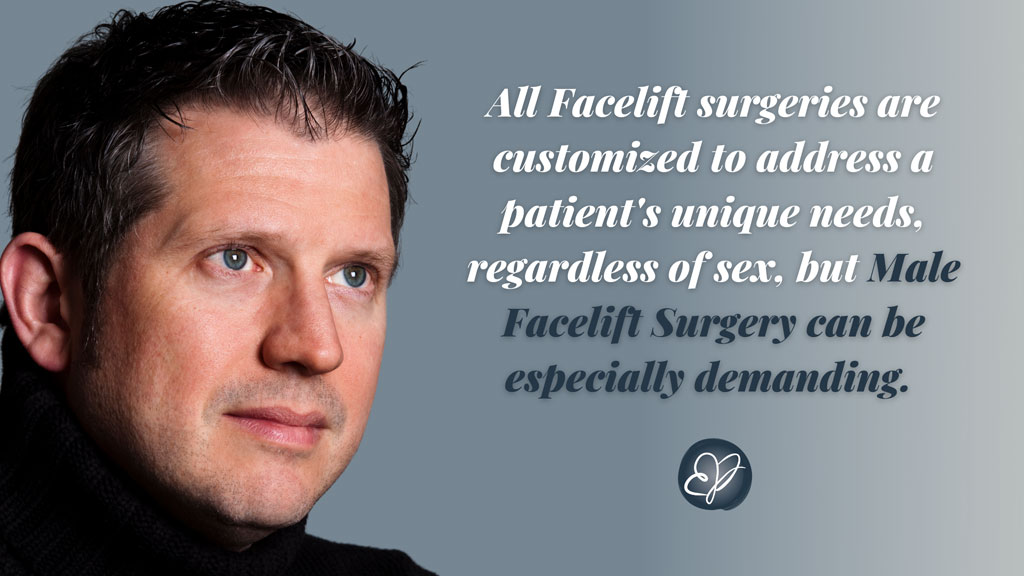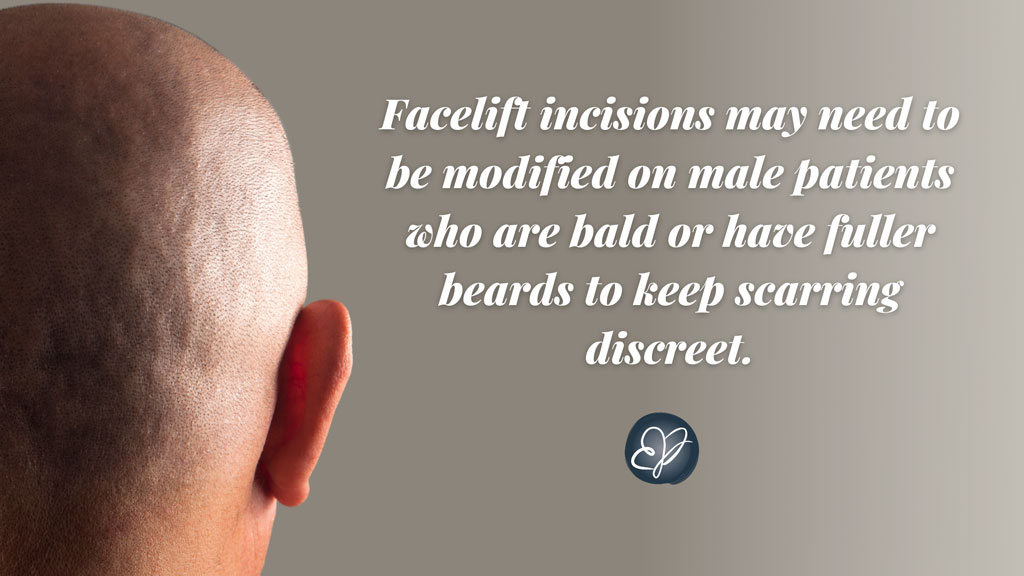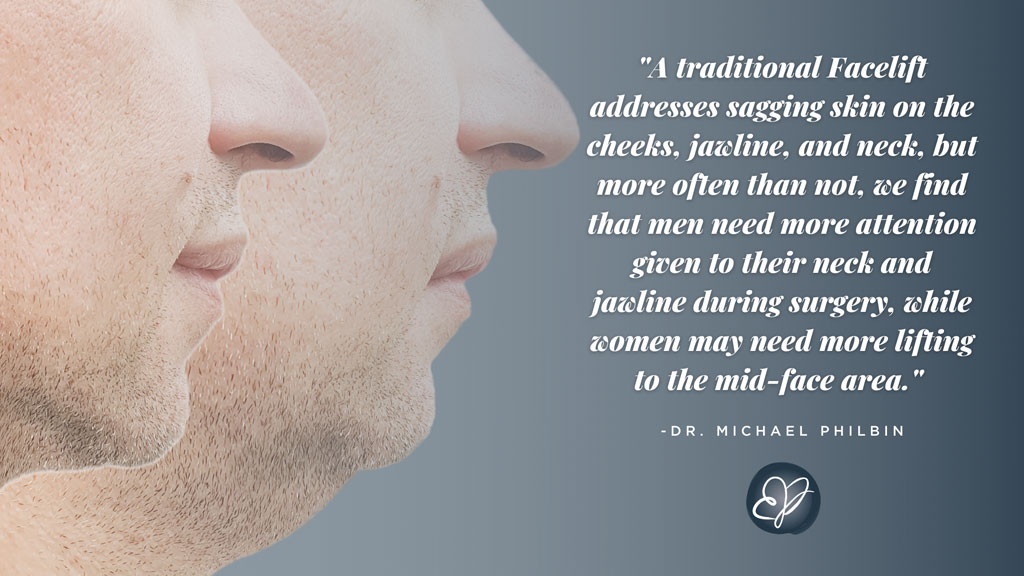According to a recent survey by the American Society of Plastic Surgery (ASPS), Americans have developed a more positive attitude towards plastic surgery than ever before during the COVID-19 pandemic. Over 11% of women surveyed reported that they are more interested in plastic surgery than before the pandemic. As it turns out, women aren’t the only ones! Plastic surgery offices across the nation have seen a definitive uptick in men seeking procedures to help them turn back the clock to a more youthful appearance. Whether a result of the “Zoom Boom” or increased flexibility for downtime and time off work, more men are scheduling Facelift surgery to help them feel more confident and attractive.

“Although women still represent the majority of the Facelift surgeries we perform at our practice, we have definitely seen an increase in men requesting consultations,” says Dr. Michael Philbin, a board-certified plastic surgeon and partner at Edina Plastic Surgery. “In general, I would say that men account for around 10% of Facelifts at our practice, but the pandemic has seemed to normalize many procedures, which may make some men feel more comfortable exploring their options without fear of stigma.”
All Facelift surgeries are customized to address a patient’s unique needs, regardless of sex, but male Facelift surgery can be especially demanding. Not only does it require exceptional surgical skill, but a plastic surgeon must also respect and maintain the more masculine features of the male face during surgery, like the contour of the jawline. Here are four surprising facts that make male Facelift surgery unique:
#1 – Men’s skin is different than a woman’s skin.
“A man’s facial skin has more hair follicles and is generally thicker and oilier than his female counterpart,” explains Dr. Philbin. “Men also tend to have stronger connective tissues. These attributes spare many men from experiencing the visible signs of aging for quite a while. Still, their necks and jawlines may be particularly vulnerable to sagging due to the weight and heartiness of their skin. Most men schedule Facelift consultations because they feel their lower face looks weaker and less masculine due to the excess skin under the chin area. A Facelift, which includes a Neck Lift at our practice, can remove excess tissue and relocate skin to a more youthful positioning on the face to restore masculine definition and contour.”
#2 – Bald heads and beards require special attention.

The incisions for Facelift surgery generally travel around the ears, where they can be hidden in natural bends and folds, and then discreetly end their journey within the hair above the nape of the neck. This pattern allows your plastic surgeon access to the tissues they need to trim, reposition, and redrape before stitching incisions closed with as little tension as possible. Facelift incisions may need to be modified on male patients who are bald or have fuller beards to keep scarring discreet.
“With bald male patients, we sometimes need to shorten the incision we make around the ear for Facelift surgery because there is no hair to camouflage post-surgical scarring,” explains Dr. Philbin. These incisions have to be very precise to give your surgeon access to the underlying tissues, keep scars discreet, and to avoid tension on any stitches.”
Beards can also present a challenge during male Facelift surgery, as your plastic surgeon doesn’t want to lift and shift skin with hair follicles to an area of the face where there is not usually hair. For example, many female Facelift surgeries involve a post-tragal incision that goes into the ear at the tragus (the tab of cartilage that obscures the ear canal). Many surgeons will avoid this incision on male Facelift patients with beards because facial hair doesn’t normally travel inside the ear and would be a dead giveaway of Facelift surgery. Instead, the incision may be made in the deep vertical crease directly in front of the ear to keep beard distribution looking natural.

#3 – Men may bleed more after surgery.
Hair follicles demand a healthy blood supply to grow. Men have more facial hair than women, which means that the skin on a man’s face will have a thriving blood supply. This quality makes some men more susceptible to blood pooling under the skin after Facelift surgery, also called a hematoma. While minor hematomas can be drained by your surgeon, more severe cases may require additional surgery.
#4 – Men may require more attention to their neck than their face during Facelift surgery.
“A traditional Facelift addresses sagging skin on the cheeks, jawline, and neck, but more often than not, we find that men need more attention given to their neck and jawline during surgery, while women may need more lifting to the mid-face area,” says Dr. Philbin. “The small incision required for Neck Lift surgery that is made directly under the chin allows your surgeon to remove excess fat and tighten muscles and tissues to improve the contour of a man’s jawline and neck.
The amount of skin laxity a man has will ultimately determine where his Facelift incisions will be made. Still, it’s important to remember that the face and neckline age together, so results may appear more natural when they are surgically rejuvenated together. Regardless, the results of male Facelift surgery can refresh a man’s appearance, maintain his masculine features, and make him look AND feel more youthful!”
Schedule a complimentary consultation to discuss Facelift surgery with Dr. Michael Philbin or another board-certified plastic surgeon at Edina Plastic Surgery by calling (612) 688-3177 or CLICKING HERE.



